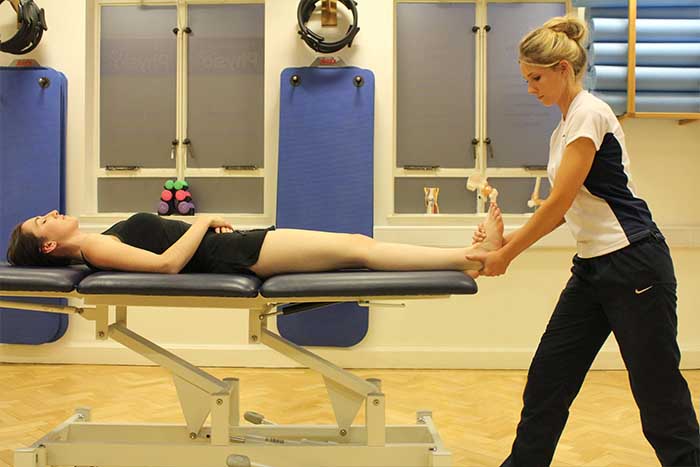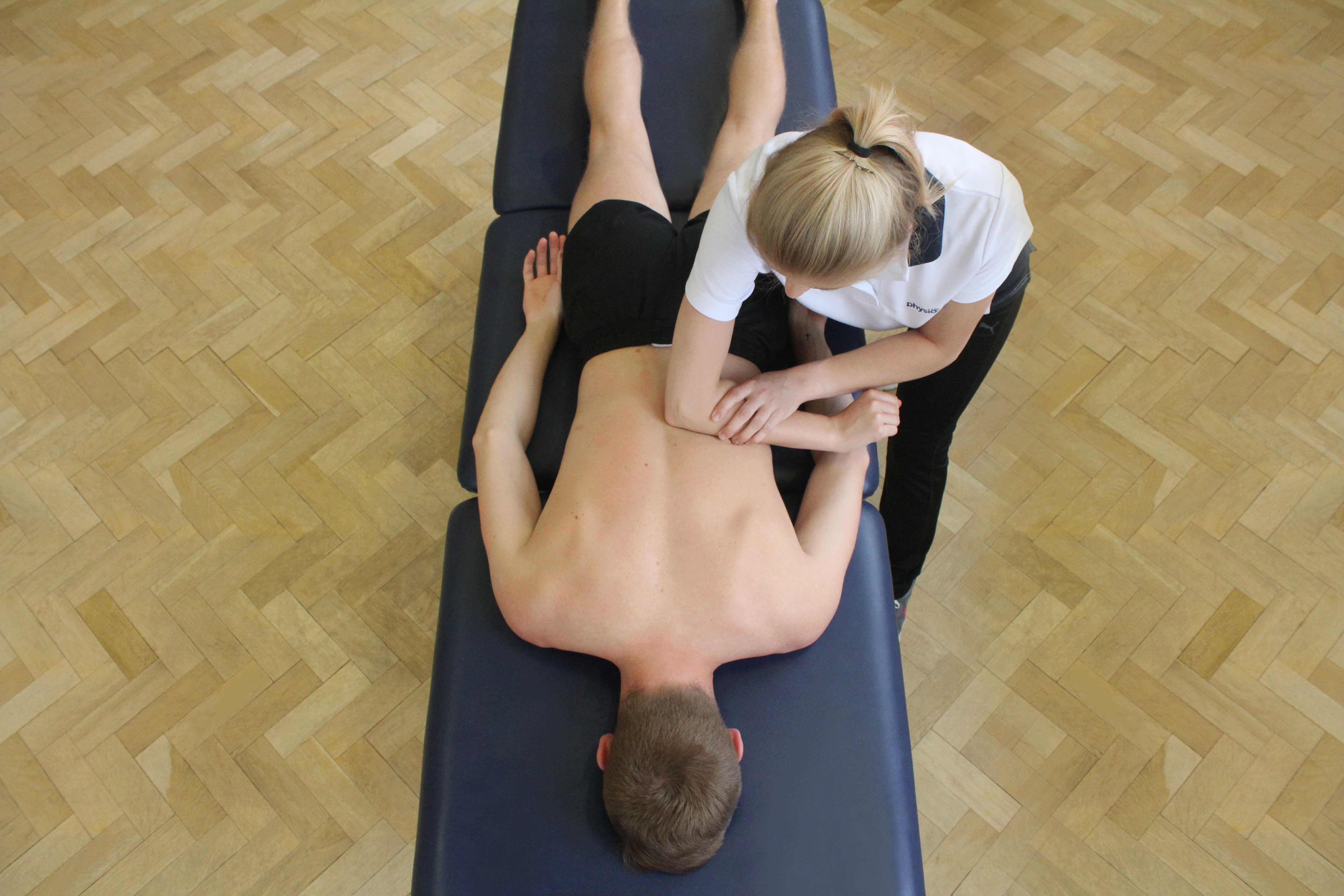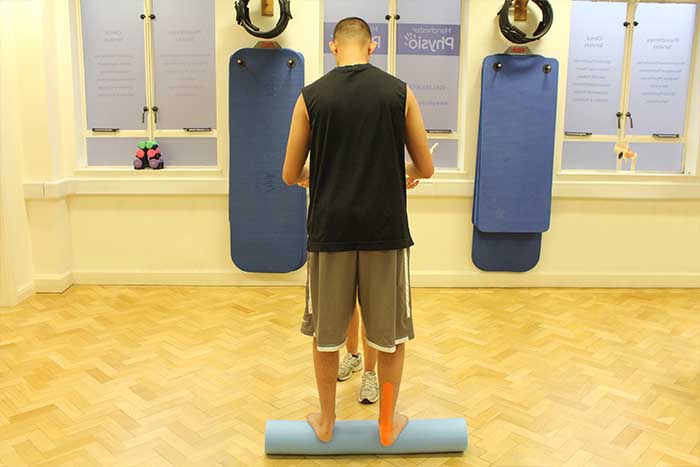Massage therapy can be used to treat a number of common issues associated with occupational health. Occupational health refers to the overall health and well-being of an individual and the effects work has on their physical and psychological state. Massage treatment can be especially beneficial when applied to an individual during circumstances such as acute pain, chronic pain, tight muscles and stress. When applied massage can produce benefits such as a reduction in pain, stress and tight muscles and an increase in range of movement and improved posture.

What is massage for occupational health?
Occupation health refers to both the physiological and psychological state of individuals and the impact their occupation has on their overall health and well-being. Physical stresses of the workplace include sitting with poor posture for long periods of time and lifting heavy objects with poor technique. Psychological stressors of the workplace can include an increase in work responsibilities and hours. Physical and psychological stressors can leave the individual with tight muscles, pain, stress and anxiety. Massage treatment can be used to ease the stress of workplace demands and leave the individual pain free and relaxed.
 Above: Deep tisue massage of the lower back by a specilaist massage therapist
Above: Deep tisue massage of the lower back by a specilaist massage therapistWhen can massage help for occupational health?
Massage therapy can be beneficial to an individual within a number of different circumstances such as;
Massage can be beneficial to an individual when experiencing acute pain. Acute pain can range from mild to severe and last a few minutes up to 6 months. Acute pain can be reduced or eliminated when the root cause of the pain is targeted. If left untreated acute pain can lead to chronic pain. Massage can help reduce or eliminate acute pain through the pain gate theory and an increase in tissue temperature. The pain gate theory can reduce pain as it states non-harmful stimuli (massage) can block harmful stimuli (pain) from travelling up the spinal pathway to the brain. The pain gate theory explains how a reduction in pain is experienced during the application of massage. Massage can also reduce acute pain through increasing tissue temperature, this is achieved through stimulating vasodilation and therefore increased blood circulation. An increase in blood circulation allows the tissue to relax and a reduction in pain is felt.
Massage can be beneficial to an individual with chronic pain. Chronic pain refers to pain that has lasted longer than 6 months. Chronic pain can be a result of an old injury site where the pain signals remain active. Symptoms associated with chronic pain include a reduction in range of movement, tissue flexibility and performance and an increase in muscular tightness, scar tissue and swelling. If left untreated chronic pain can also lead to an increase in stress, frustration and depression due to the limiting lifestyle factors. With reference to occupational health common chronic pain issues involve lower back, shoulders and neck pain.
Massage treatment during the presence of tight muscles can be very beneficial. Tight muscles occur due to a buildup of waste products, scar tissue and adhesive muscle fibre connections. With reference to occupational health tight muscles can occur due to repetitively lifting heavy objects or sitting with poor posture for prolonged periods of time. Massage techniques which aim to assist the lymphatic system in the removal of waste products can help decrease the pain felt from waste accumulation. Massage techniques which aim to apply compressive and manipulative forces can breakdown the adhesive scar tissue which can allow the muscle to relax and move functionally and efficiently.
Massage can also be used to benefit an individual experiencing psychological stress. Stress is an extremely common issue with regards to occupational health. Stress can be increased due to a number of reasons such as an increase in working hours, role and responsibilities. If left untreated stress can develop into a number of conditions such as depression and insomnia. The application of massage techniques involving long, slow and gentle strokes can reduce the feeling of stress through stimulating and inhibiting the release of certain hormones and endorphins. The application of massage can increase the release of endorphins such as serotonin and dopamine which can leave the individual feeling relaxed and happy. Massage can reduce the release of cortisol, a stress related hormone, allowing the individual to feel a reduction in anxiety, stress and depression.
What are the physiological effects of a massage in occupational health?
The application of massage can produce a number of physiological changes to an individual such as;
Massage can increase vasodilation. Vasodilation refers to the widening of blood vessels. Vasodilation occurs when the smooth muscles surrounding blood vessels relax, this allows the blood vessels to widen and allow an increase in blood circulation. An increase in vasodilation can be observed by a pink or red colouration of the skin. An increase in vasodilation can result in an increase in tissue temperature, cellular exchange and tissue healing.
Massage can increase the release of endorphins serotonin and dopamine. Endorphins are released within the body during times of relaxation such as that during a massage. If levels of endorphins within the body are low the individual could feel negative, depressed and lonely. The release of endorphins such as serotonin and dopamine can reduce negative thoughts. An increase in the release of serotonin can leave the individual feeling happy, relaxed and content. An increase in the release of dopamine can leave the individual feeling motivated, inspired and energised.
Massage can decrease the release of cortisol. Cortisol is a stress related hormone which is released from the adrenal gland when stimulated to by the hypothalamus within the brain. When a threat is detected the hypothalamus stimulates an increase in the release of cortisol. Low levels of cortisol can be beneficial during times of threat as it allows the individual to feel alert, aware and observant. If levels of cortisol remain high the individual can be left feeling anxious, stressed and depressed. Massage can decrease the release of cortisol, this can leave reduced feelings of anxiety and stress and allow the individual to feel relaxed.

What are the benefits of a massage for occupational health?
The application of massage can produce a number of benefits to an individual suffering from occupational health issues such as;
Massage therapy can reduce pain, this is achieved through the pain gate theory. The pain gate theory states when pain occurs, nerve fibres are stimulated to send impulses up the spinal pathway to the brain. When massage is applied alternate nerve fibres are stimulated to send impulses to the brain which block the passage of pain impulses. Pain can also be reduced through the application of massage due to a reduction in muscular tension, scar tissue and fascia tension.
Massage can reduce stress. Massage techniques involving long, slow and relaxing strokes can be used to reduce psychological stress. Massage can inhibit the release of cortisol, a hormone related to stress, anxiety and depression. A reduction in the release of cortisol can lead the individual feeling positive. Massage can also promote relaxation through stimulating the release of natural endorphins such as serotonin and dopamine. An increase in the release of endorphins can leave the individual feeling relaxed, happy and enthusiastic.
The application of massage can increase range of movement. The application of massage techniques involving moderate to deep pressure strokes can manipulate the muscles in a way to produce elongating stretches which subsequently increases elasticity and flexibility. Massage can increase range of motion by increasing tissue temperature and decreasing scar tissue. Massage can increase tissue temperature by increasing blood circulation through stimulating vasodilation. Vasodilation refers to the widening of blood vessels which allows greater blood circulation containing nutrients and oxygen to pass to muscles. An increase in tissue temperature can allow the muscles to relax and increase in elasticity. Massage can improve range of movement by decreasing scar tissue. Scar tissue is comprised of adhesive fibres laid in an unorganised fashion which can restrict range of movement and muscular performance. Massage can break up the adhesive connections and realign the fibres into a functional fashion. A reduction in scar tissue can improve muscular performance and function and subsequently improve range of movement.
Massage has the ability to reduce the tension within muscles. The application of moderate to deep massage strokes involving a variation of longitudinal and kneading movements can reduce muscular tension. The physiological changes which allow this include an increase in tissue temperature, a reduction in scar tissue and waste accumulation. An increase in tissue temperature is achieved through the stimulation of vasodilation, which includes an increase in blood circulation to the tissue. A reduction in scar tissue is achieved through applying compressive forces which breakdown the adhesive type 3 collagen fibre connections. A decrease in waste accumulation is achieved through assisting the body's lymphatic system in transporting waste fluid to the lymph nodes to be filtered and expelled from the body. The process involving the reduction in muscular tension can also reduce pain, improve range of movement and increase flexibility.
Massage techniques can also be used to improve posture. Sitting or standing for prolonged periods with poor posture can result in muscles becoming tight. If left untreated these tight muscles can make it difficult or even prevent an individual obtaining the correct posture. With the application of deep to moderate massage techniques tight muscles can become relaxed and in conjunction with postural correction exercises or taping techniques a functional and pain free posture can be achieved.
Summary
Massage treatment can be extremely beneficial with regards to occupational health. Massage can be beneficial when applied during the presence of certain situations such as acute pain, chronic pain, tight muscles and stress. The application of massage can produce a number of physiological effects such as increased vasodilation, increased endorphins serotonin and dopamine and decreased cortisol. The physiological effects of massage can produce benefits such as decreased pain, stress and muscular tightness in addition to increased range of movement and posture.
How can I arrange a massage to help occupational health?
To arrange a massage to help occupational health at Physio.co.uk, email us at office@physio.co.uk or call us on 0161 883 0077.
You can also book an appointment online and save £10.

 0330 088 7800
0330 088 7800



































